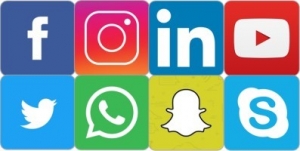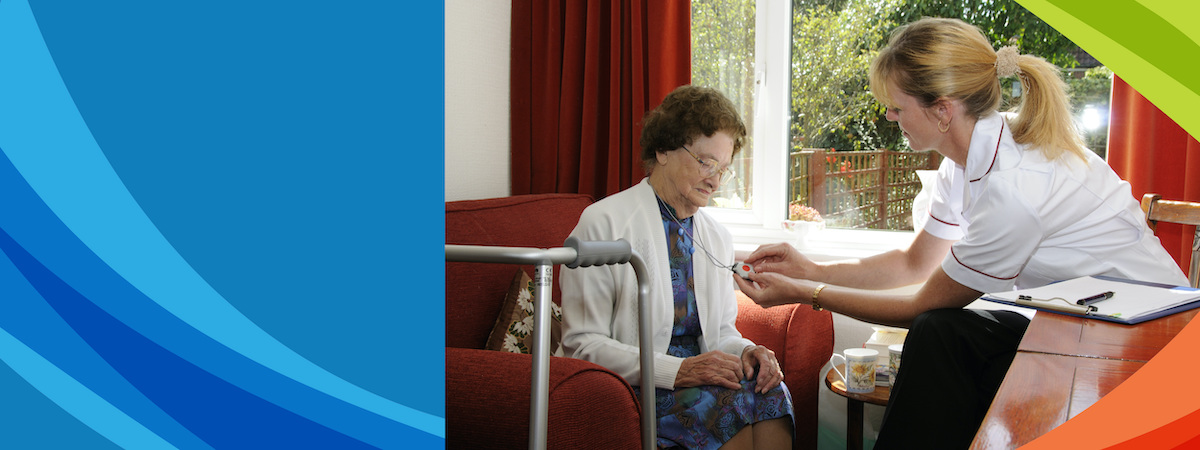Introduction to Social Media

Social media websites and applications involve the use of the internet to connect users with their friends, family and acquaintances. You can connect with people from you mobile phone, tablet, or computer to share photos, videos and information, organise events, make calls, chat, and play online games.
Each social media platform uses different features to help you connect with an extended network of people, with the most well-known social media platforms being Facebook, Twitter, Instagram and LinkedIn. While each platform is different, key features often include:
- A profile page. This page usually allows you to post a picture and a few details about you and your interests, which can be seen by your friends. Often friends can leave comments or share information with you on your profile page.
- Friends or Followers. To connect with your friends, family, and acquaintances, one of you must send a “Friend Request” or “Follow Request”. Often settings can be changed to alter who can send you friend requests and what information they can see.
- Groups and Pages. Most platforms will allow you to create or join groups or pages. These are often used by groups of people who have a common interest, connections, or events. On these people can share information, images, links, and create events.
- Businesses. Many businesses create their own pages or links on social media platforms, which can include information on their services, links to purchase on enrol, reviews on user experiences, and often an option to message a customer assistant.
Reasons and Benefits for using Social Media
Social Media allows individuals to stay connected and participate in a broader community, helping individuals with disabilities to meet their personal goals and needs, and overcome communication problems. Key benefits acknowledged are:
- Used as tools for finding a job and establishing contact with an employer, e.g. LinkedIn
- Fosters education systems and allows for remote access to information
- Leisure and entertainment
- Sharing stories and hearing the stories of others
- Meeting like-minded people who can relate to your experience
- A platform to have your voice heard and get involved with new campaigns
- Keep up-to-date with favourite brands, products, and services
- Contact businesses, specialists, and other professionals.

Social Media Accessibility
While most social media platforms have made improvements in accessibility, some sites are still difficult to navigate for people with a disability, such as cognitive, hearing, sight or mobility impairments. As these accessibility issues vary depending on the social media site, there are different tips and tricks available to overcome these issues for each.
Media Access Australia has developed documents with tips on overcoming the accessibility issues found in each of the most popular social media tools. Click on the below links for more information on each platform.
- Facebook: SociABILITY tips for Facebook as a PDF Download or MP3 Audio Version
- LinkedIn: SociABILITY tips for LinkedIn as a PDF Download or MP3 Audio Version
- Twitter: SociABILITY tips for Twitter as a PDF Download or MP3 Audio Version
- Skype: SociABILITY tips for Skype as a PDF Download or MP3 Audio Version
- YouTube: SociABILITY tips for YouTube as a PDF Download or MP3 Audio Version
- Blogging: SociABILITY tips for Blogging as a PDF Download or MP3 Audio Version.
Groups, Pages, Businesses
Each social media platform offers a new forum for people to connect with like-minded individuals. This is often in the form of group pages, group messages, and business pages, with some examples and how they are used are listed below.
- On LinkedIn, individuals can join the Blind and Visually Impaired Professional Group, connecting working professionals with visual impairments to share their experiences in the workplace and offer tips and advice.
- On Facebook, Deaf and hearing impaired individuals can follow the National Disability Insurance Scheme Page to remain up-to-date with upcoming events, new technology or devices, noteworthy news items, and connect with the experiences of others. Additionally, groups such as The Deaf Society’s Auslan Student Group connect students across Australia to share their experiences and create a community.
- Blogs are a great way for people to share their experiences and for others to read them and know they are not alone. Often blogs will include guest interviews and others, such as Eat, Speak, & Think for people with difficulty eating, speaking, or thinking, will work with clinicians to help discuss challenges and how to overcome them.
- YouTube is commonly used by individuals and businesses as another medium to share information and experience. For example, the channel titled The Tommy Edison Experience sees one man use his platform and humour to answer the most popular questions about living without sight.
- Twitter offers a platform for individuals, businesses, and organisations to share important information, news items, and event dates to interested communities. For example, the Life without Barriers Twitter account posts regular updates on campaigns, events, and information centres for individuals with physical disabilities.
More Information:
Online Training about the different social networks, how to connect with people and staying in control of your information is available on the Be Connected Web Page or by downloading the Be Connected TipSheet (PDF Download)
ACCAN Introduction to Social Networking Web Page Media Access Australia SociABILITY Web Page
![]() INF007-Social Media-2019 12 02.docx
INF007-Social Media-2019 12 02.docx


